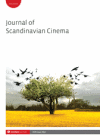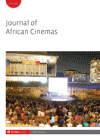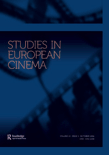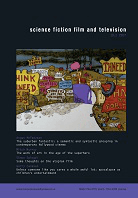
Journal of Scandinavian Cinema
Scope & Guideline
Connecting Cultures Through the Lens of Film
Introduction
Aims and Scopes
- Exploration of Nordic Film Culture:
The journal delves into the unique characteristics of Nordic cinema, addressing its historical development, cultural significance, and the socio-political context in which films are produced and received. - Critical Analysis of Representation:
A significant focus is placed on the representation of gender, race, and sexuality in Nordic cinema, examining how these elements shape narratives and audience perceptions. - Interdisciplinary Approaches:
The journal encourages interdisciplinary research methodologies, integrating film studies with sociology, cultural studies, and media theory to provide a comprehensive understanding of cinematic practices. - Impact of Digital Platforms:
With the rise of streaming services, the journal investigates how global platforms influence Scandinavian film industries, including production, distribution, and audience engagement. - Youth and Popular Culture:
The journal emphasizes the representation of youth cultures in cinema, exploring how films reflect and shape the experiences of young people in Nordic societies.
Trending and Emerging
- Contemporary Issues in Youth Cinema:
There is a growing interest in how contemporary films address youth experiences, particularly in relation to themes of neoliberalism, social justice, and cultural identity. - Intersectionality in Representation:
Emerging discussions focus on intersectionality, exploring how race, gender, and sexuality intersect within Nordic cinema, thus enriching the understanding of representation. - Digital and Streaming Influences:
The impact of digital platforms and streaming services on cinematic production and consumption has become a prominent theme, highlighting the transformation of audience engagement with Nordic films. - Globalization of Nordic Cinema:
The journal is increasingly examining how Scandinavian cinema is positioned within global contexts, addressing issues of cultural exchange and the international reach of Nordic narratives. - Activism and Film Authorship:
There is an emerging trend of exploring activism within film authorship, particularly regarding filmmakers' roles in addressing social issues through their work.
Declining or Waning
- Traditional Genre Studies:
There is a noticeable decrease in articles focusing solely on traditional genre studies, such as Nordic noir, as the journal increasingly embraces more diverse and contemporary themes. - Historical Cinema Analysis:
While historical analysis remains relevant, there has been a decline in papers solely dedicated to early cinema or historical film movements, as the focus shifts towards contemporary issues and representations. - Focus on National Cinema:
The emphasis on strictly national cinema narratives is waning, with a growing interest in transnational and global perspectives that reflect the interconnectedness of contemporary film industries. - Conventional Film Criticism:
The journal has seen a reduction in conventional film criticism, favoring more nuanced analyses that engage with broader socio-cultural contexts and audience interactions. - Static Gender Representations:
Themes centered around static gender representations are diminishing, giving way to more dynamic discussions on fluidity and intersectionality in gender portrayals.
Similar Journals

JOURNAL OF POPULAR FILM AND TELEVISION
Advancing Critical Discourse in Visual and Performing Arts.JOURNAL OF POPULAR FILM AND TELEVISION, published by Routledge Journals, Taylor & Francis Ltd, stands as a significant platform for academic discourse in the realms of cultural studies, visual arts, and performing arts. With its ISSN: 0195-6051 and an evolving digital presence indicated by its E-ISSN: 1930-6458, the journal has carved out a respected niche since its inception in 1978, continuing to contribute to scholarly discussions through 2024. Its impact within the academic community is underscored by a Q3 ranking in Cultural Studies and a Q2 ranking in Visual Arts and Performing Arts for 2023, highlighting its relevance across diverse fields. Notably, with a Scopus ranking placing it in the 74th percentile among visual arts and performing arts journals, it serves as an essential reference point for researchers, professionals, and students committed to the critical examination of film and television. Although not an open-access journal, it provides valuable insights and analysis that enrich understanding of popular media's impact on society. The journal's location in the United States, with a headquarters in Abingdon, England, further affirms its international scope and influence.

Journal of African Cinemas
Documenting the Evolution of African Storytelling on ScreenJournal of African Cinemas is a pioneering publication dedicated to exploring the dynamic field of African cinema and its cultural impacts. Published by INTELLECT LTD in the United Kingdom, this journal serves as a crucial platform for researchers, filmmakers, and students interested in understanding the complexities of film within the African context. With ISSN 1754-9221 and E-ISSN 1754-923X, the journal focuses on various aspects of cinema, including theory, production, and reception, highlighting the rich tapestry of storytelling from the African continent. Despite being classified in Q4 in Communication and Q3 in Cultural Studies and Visual Arts & Performing Arts for 2023, it stands out by capturing the multifaceted identities and experiences portrayed in African films. Engaging with a diverse array of interdisciplinary topics, the Journal of African Cinemas invites contributions that foster critical discourse and promote a deeper understanding of the unique aesthetic and social narratives present in African filmmaking. As it converges into a significant scholarly resource from 2017 to 2023, this journal is an essential read for anyone invested in the intersection of culture and cinema.

Canadian Journal of Film Studies-Revue Canadienne d Etudes Cinematographiques
Unveiling the Artistry of Film StudiesCanadian Journal of Film Studies-Revue Canadienne d'Études Cinématographiques is a distinguished publication dedicated to the exploration of film studies within the context of Canadian cinema and global visual arts. Published by University of Toronto Press Inc., this journal offers a platform for innovative and critical scholarship, having achieved a notable Q2 ranking in the Visual Arts and Performing Arts category for 2023, with an impressive Scopus rank of 207 out of 667, positioning it in the 68th percentile among peers. With a continuous publication record since its established years from 1998 to 2001 and 2004 to 2024, it has become an essential resource for researchers, professionals, and students interested in the evolving landscape of film and cinema. The journal not only addresses theoretical perspectives but also engages with contemporary practices, thereby fostering a deeper understanding of cinematic arts. Despite not offering open access, it remains a vital repository of knowledge for those seeking to advance their studies and contribute to the discourse in film studies.

Etica & Cine
Highlighting the Ethical Implications of Screen NarrativesEtica & Cine is a distinguished open-access journal published by the University of Buenos Aires, Faculty of Psychology, dedicated to the interdisciplinary field of ethics in cinema and visual culture. With the ISSN 2250-5660 and E-ISSN 2250-5415, this journal has been a vital platform for researchers, professionals, and students since its inception in 2011, providing a space for critical discourse surrounding the ethical dimensions of film and media. The journal aims to foster scholarly dialogue by publishing high-quality articles that explore the philosophical, social, and psychological implications of filmic representations. While the journal's H-index is yet to be established, its commitment to open access ensures that valuable insights are readily available to a global audience, thus enhancing its significance in academic and professional circles. As the conversation around ethics in cinema continues to evolve, Etica & Cine stands as an essential resource for anyone engaged in this vital area of study.

Studies in European Cinema
Navigating the Cultural Narratives of European CinemaStudies in European Cinema is an esteemed journal published by Routledge Journals, Taylor & Francis Ltd, focusing on the multifaceted realms of European cinema and its contextual relevance. With an ISSN of 1741-1548 and an E-ISSN of 2040-0594, this journal provides a dynamic platform for researchers and practitioners in the fields of Communication, Visual Arts, and Performing Arts. As reflected by its recent Scopus rankings, it holds a respectable position in the Arts and Humanities with an 84th percentile rank, indicating its significance and impact in the scholarly community. While not entirely open access, Studies in European Cinema seeks to foster critical discourse and analysis from 2004 to 2024, covering a broad spectrum of topics related to film studies, cultural representations, and the evolving narratives within European cinematic practices. Engaging with diverse theoretical frameworks, the journal aims to contribute to the vibrant dialogue surrounding European cinema, making it an essential resource for academics, filmmakers, and students alike who are passionate about exploring cinematic expression in a European context.

SIGHT AND SOUND
Advancing Film Studies with Insightful AnalysisSIGHT AND SOUND is a prestigious journal published by the British Film Institute, dedicated to the exploration of cinema and its cultural significance. With an ISSN of 0037-4806 and an E-ISSN matching the same, this journal has been a critical platform for film studies since its inception, contributing valuable insights to the realms of visual arts and performing arts. Despite its discontinuation in the Scopus database post-2021, SIGHT AND SOUND commands respect within its field, currently holding a Q3 rank among Visual Arts and Performing Arts journals. Operating from 21 Stephen Street, London W1P 1PL, England, it serves as a vital resource for researchers, professionals, and students looking to deepen their understanding of film theory, critique, and history. While access to its articles is not open, the journal continues to influence the discourse in film studies, making it a significant asset in academic and professional circles.

Asian Cinema
Transforming Perspectives on Asian Visual NarrativesAsian Cinema is a distinguished academic journal dedicated to exploring the vibrant landscape of cinema across Asia, published by INTELLECT LTD, a recognized name in scholarly publishing. With its ISSN 1059-440X and E-ISSN 2049-6710, this journal has carved a niche within the realms of Communication and Visual Arts and Performing Arts, holding a 2023 Q4 ranking in Communication and a more favorable Q2 ranking in Visual Arts and Performing Arts. Operating out of the UK, specifically at THE MILL, PARNALL RD, BRISTOL BS16 3JG, ENGLAND, Asian Cinema provides a platform for interdisciplinary dialogues, critiques, and analyses that contribute significantly to the understanding of cinema as a cultural artifact. Acknowledged for its robust contribution to scholarly research, the journal commands a Scopus rank of 151 out of 667 in Visual Arts and Performing Arts, placing it in the 77th percentile, while achieving a 366 out of 511 rank in Communication, reflecting its ongoing relevance in the field. Although it operates under a traditional access model, Asian Cinema remains vital for researchers, professionals, and students alike, enriching academic discourse and providing valuable insights into the rapidly evolving cinematic practices across Asia.

Jewish Film & New Media-An International Journal
Chronicling the Evolution of Jewish Narratives in Film and New MediaJewish Film & New Media: An International Journal, published by Wayne State University Press, serves as a crucial platform for scholars and practitioners within the realms of Film Studies, Jewish Studies, and Media Studies. Since its inception, the journal has explored the intersection between Jewish culture and cinematic representation while also addressing contemporary media narratives. With an ISSN of 2169-0324 and E-ISSN 2169-0332, it is indexed in major databases, showcasing solid rankings in various disciplines, including a commendable Q2 rank in Visual Arts and Performing Arts. Despite its current Q4 categorizations in Anthropology and Communication, the journal is noted for its engaging contributions that sow rich discussions about Jewish identity, filmic expression, and media representation. Researchers and students alike benefit from the journal’s wealth of interdisciplinary scholarship, which spans converged years from 2013 to 2017 and 2019 to 2022, ensuring a robust timeline of critical inquiry. As an essential resource for understanding the nuances of Jewish film and new media, this journal occupies a unique niche, inviting contributions that push the boundaries of current academic dialogue.

Hrvatski Filmski Ljetopis
Connecting Scholars through Cinematic Discourse.Hrvatski Filmski Ljetopis, published by the Croatian Film Clubs Association, serves as a pivotal academic journal in the field of film studies, celebrating and analyzing the rich cinematic heritage of Croatia and beyond. With an ISSN of 1330-7665, this journal caters to researchers, practitioners, and students who are passionate about the art of filmmaking, encompassing both theoretical discourse and practical implications. Although it is not currently available as an open-access publication, its curated content is of significant value to anyone interested in the evolution, critique, and history of film in a Croatian context, having previously been indexed in Scopus until coverage was discontinued. The journal operates out of Zagreb, Croatia, at the Croatian Film Clubs Association headquarters, and aims to foster scholarly dialogue while contributing to the broader field of national and international cinematography.

Science Fiction Film and Television
Decoding the Future: Insights into Sci-Fi’s Impact on SocietyScience Fiction Film and Television, published by LIVERPOOL UNIV PRESS, is a leading academic journal that explores the rich intersection of science fiction with cinematic and television narratives. With an ISSN of 1754-3770 and E-ISSN 1754-3789, this journal provides a platform for critically engaging with both historical and contemporary works within the genre, offering insights into its cultural significance, aesthetic innovations, and societal impacts. As part of the communication and visual arts fields, it is recognized in the Scopus ranking, achieving an impressive percentile of 87th in Visual Arts and Performing Arts, and maintaining a respectable rank within communication studies. Since its inception in 2018, it aims to foster dialogues among scholars, professionals, and students, making substantial contributions to the understanding of science fiction as a vital cultural phenomenon. With access options that cater to a broad audience, Science Fiction Film and Television is essential reading for those interested in exploring the innovative potentials and narratives of science fiction across media.